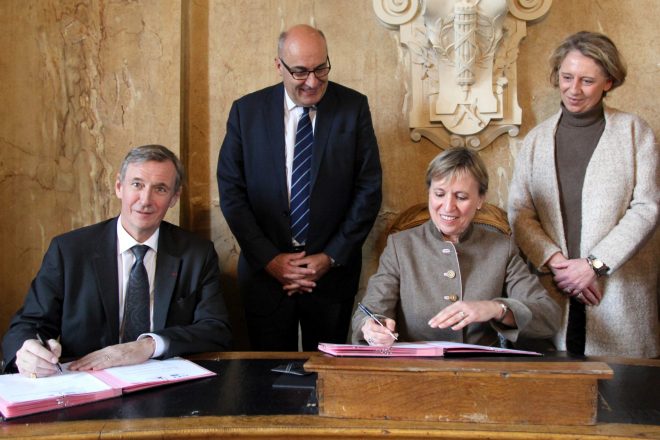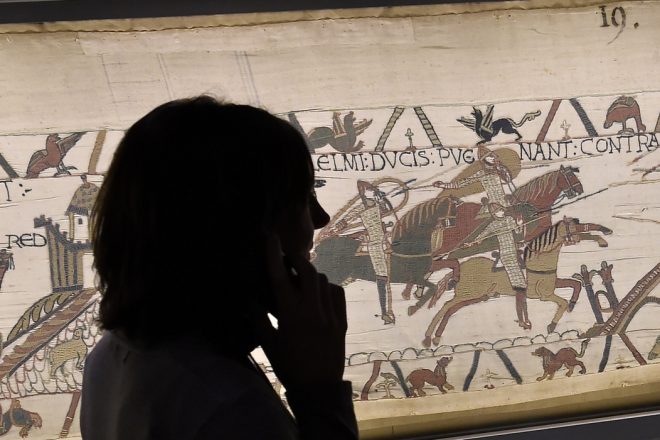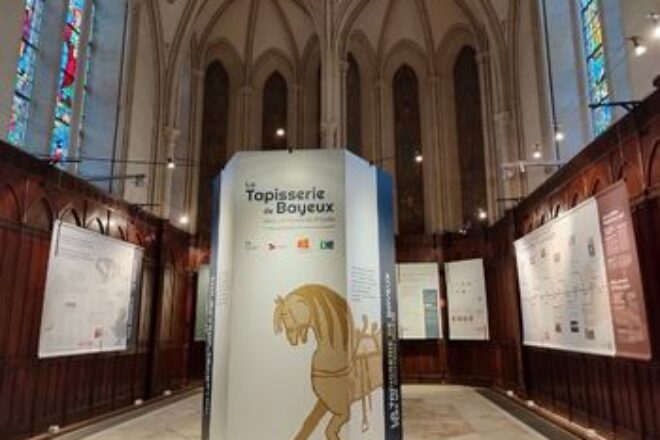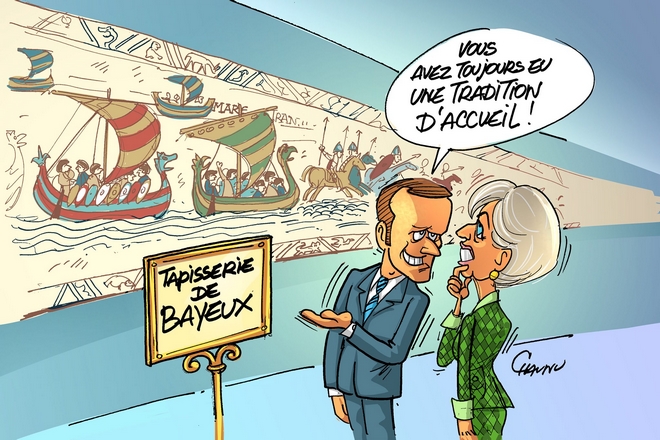
Share
The aim of the project, born in 2013 at the instigation of the DRAC Normandie and the City of Bayeux, is to completely reshape the way in which the Tapestry is displayed and the design and content of the museum within the William the Conqueror Centre. It will allow the provision of better facilities for the public, present a broader discourse on the historical, cultural and artistic context of medieval Europe, enable the display areas to be enlarged, optimise the presentation of the work itself and bring the museum into the digital age. The project involves an architectural and museographic component (with the City of Bayeux as contracting authority) and a conservation/restoration component (with the French State as contracting authority), the two being carried out in parallel and in close co-operation.


In 2017 the French State as owner of the work, and the City of Bayeux as custodian, signed a custodianship agreement to re-affirm a collaboration dating back to 1804 when the work was returned to Bayeux at the request of Napoleon Bonaparte. The State is responsible for issues relating to conservation and restoration, and the City is responsible for its display to the public, preventive conservation and increasing the body of knowledge about it. The agreement is renewable and will remain in force until 2066, the thousandth anniversary of the Battle of Hastings (1066).
[Photo ©City of Bayeux : signature of custodianship agreement 20 December 2017]

The project involves re-shaping the current museum on the same site (the William the Conqueror Centre in Bayeux), taking advantage of additional spaces freed up by the relocation of the city’s multimedia library. The Bayeux Tapestry museum was attributed the label “Musée de France” (national French museum) on 29 July 2017 and will benefit from a re-design that will enable it to offer various visit formats to suit all types of visitor, more comfortable facilities, and above all different approaches to the 1,000-year old work while guaranteeing its conservation.
The members of the scientific committee meet regularly to provide support for the deliberations concerning both the conservation of the Bayeux Tapestry and its display to the public. The studies that have been commissioned are supported by a steering committee bringing together the City of Bayeux, the DRAC Normandie, the Normandy Regional Council and the Calvados General Council, who are providing support to the project particularly through the “Vallée de Seine” Contrat de Plan Interrégional (Seine Valley Inter-regional development contract), or CPIER 2015-2020 and the CPER State-Region 2021-2027.

Since March 2023, the medieval chapel (13th century) of the Grand Séminaire has been the permanent information centre for the future museum project. Open free of charge to the public, tourists and residents alike, during the museum’s normal opening hours, this exhibition, with its didactic scenography, is divided into 10 themes, including a presentation of the project’s partners and its chronology, the principles of the future museography and a reminder of the international influence of the work. Since the beginning of 2024, drawings of the future museum are presented in the chapel

The possibility of a loan of the Bayeux Tapestry was raised during the Franco-British summit at Sandhurst in 2018. Since then, a purely administrative agreement has been signed between the French and British Ministers of Culture, paving the way for cultural exchanges between the two countries. In January 2020 the results of the condition report showed that restoration work would need to be carried out on the Tapestry. The international members of the scientific committee also stated that “the artefact is very fragile and must only be moved for the purpose of carrying out restoration work”.
This operation to stabilize the work will take place following the reopening of the museum, after 2027 (Operation led by the DRAC Normandie). Therefore, the work cannot be moved before the end of this ambitious operation.